The vast, uncharted depths of our oceans continue to be one of the most mysterious and captivating frontiers on Earth. While scientists have explored only a fraction of the ocean floor, they have encountered a myriad of bizarre and unexplained creatures that defy understanding. These encounters have left both scientists and ocean enthusiasts alike both thrilled and bewildered. Let’s dive into some of the most spine-tingling encounters with deep-sea creatures that science has yet to explain.
1. The Enigmatic “Giant Phantom Jelly”

The “Giant Phantom Jelly” is a creature so elusive that even seasoned marine biologists find it difficult to comprehend. First discovered through deep-sea submersibles, this jellyfish boasts tentacles that can stretch over 33 feet long, making it one of the largest jellyfish in the ocean. According to National Geographic, its ghostly, ethereal body often appears as a shadowy figure in the depths, leading some to describe their encounters as almost supernatural. Its translucent bell, which can measure up to three feet across, is so delicate that it’s a wonder it can withstand the crushing pressures of the deep ocean.
Scientists are baffled by the jelly’s feeding habits, as it seems to lack the typical mechanisms found in other jellyfish to capture prey. Additionally, its habitat remains a mystery, as sightings are sporadic and span vast areas of the Pacific Ocean. The sheer size and unique adaptations of the Giant Phantom Jelly raise questions about how it has evolved and survived in such a demanding environment. As technology advances, researchers hope to uncover more about this enigmatic denizen of the deep.
2. The Unsettling “Bloop” Sound

In the summer of 1997, NOAA researchers captured a mysterious and powerful underwater sound that they dubbed the “Bloop.” This eerie, low-frequency noise was detected by hydrophones thousands of miles apart, suggesting it originated from a massive source. Initially, some speculated it could be the sound of an enormous sea creature, perhaps even a leviathan-like animal previously unknown to science. The sheer volume of the Bloop caused quite a stir within the scientific community, with theories ranging from underwater icequakes to volcanic activity.
Despite numerous attempts to pinpoint its source, the Bloop remains a mystery, largely because such phenomena are rare and unpredictable. While the leading explanation suggests it was the sound of icebergs fracturing and cracking, this has not been definitively proven, leaving the door open to more fantastical interpretations. The possibility of an unidentified massive marine creature lurking in the depths captures the imagination, blending the lines between scientific curiosity and myth. Until more data can be gathered, the Bloop remains one of the ocean’s many unsolved riddles.
3. The Ghostly “Black Swallower” Fish
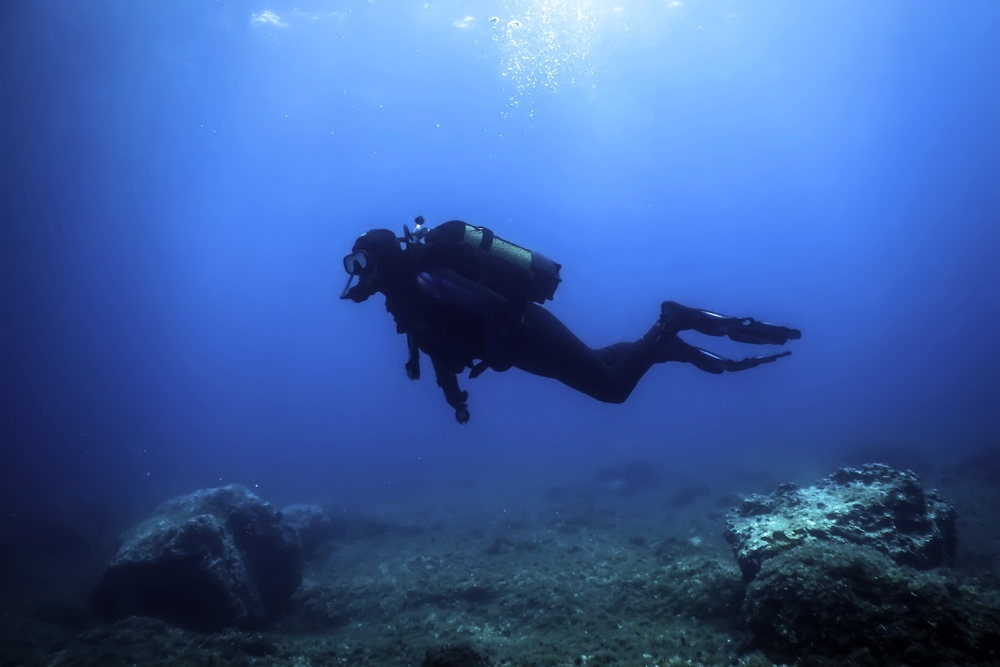
The Black Swallower is a deep-sea fish with a terrifyingly impressive ability: it can consume prey up to ten times its own mass. A member of the Chiasmodontidae family, this fish is seldom seen and remains largely a mystery to scientists. Equipped with a highly expandable stomach, the Black Swallower has been known to ingest creatures so large that decomposition occurs before digestion, leading to its own demise. This strange dietary behavior has left biologists puzzled about the evolutionary advantages it provides.
Despite its fearsome appetite, very little is known about the Black Swallower’s ecology and life cycle. Its elusive nature means that much of what is known comes from specimens that have washed ashore, often with their last meal still visible inside them. As a result, the habits and habitats of this voracious predator remain largely speculative. It’s a chilling reminder of the unknown world that exists beneath the waves, awaiting exploration and understanding.
4. The Unnerving “Vampire Squid”
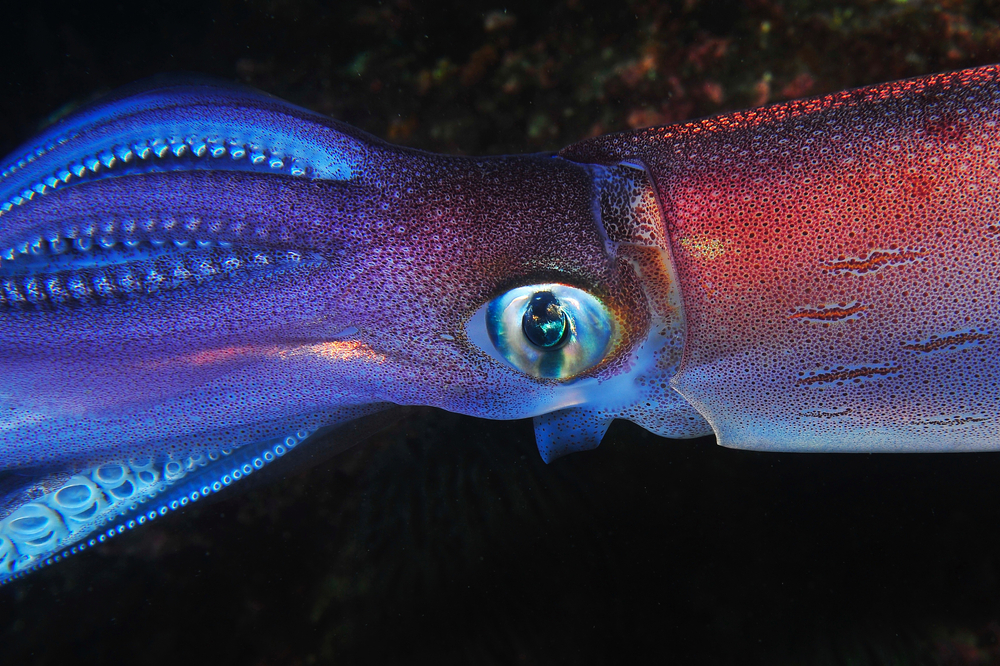
The Vampire Squid is a deep-sea creature that earns its name not from bloodsucking habits, but from its dark, menacing appearance and cloak-like webbing. Residing in the oxygen-minimal zones of the deep ocean, this cephalopod is a master of survival in harsh environments. Its reddish-brown body and eerie blue eyes give it a ghostly appearance that seems right out of a horror movie. Despite its frightening looks, the Vampire Squid is more of a scavenger than a predator, feeding primarily on marine detritus.
The creature’s bioluminescent capabilities add another layer of mystery. When threatened, it can create a dazzling display of light to confuse predators, showcasing an evolutionary marvel of the deep sea. Scientists are still uncovering the many secrets of how the Vampire Squid thrives in such low-oxygen conditions, challenging existing notions of marine biology. Each encounter with this creature provides new insights, yet leaves many aspects of its life shrouded in mystery.
5. The Startling “Bigfin Squid” Sightings
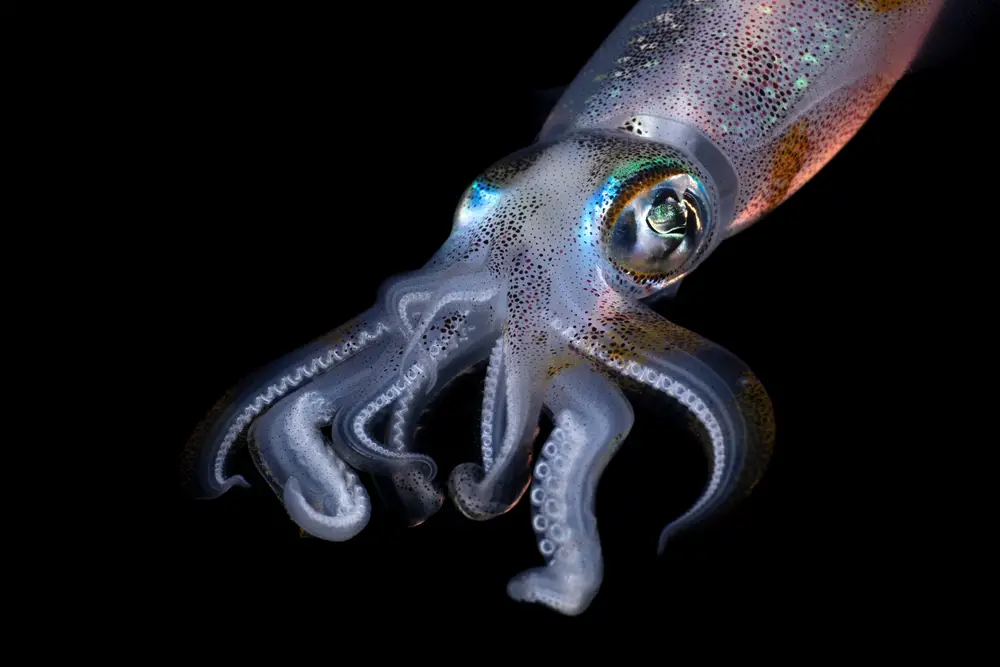
Bigfin Squids are some of the most peculiar creatures encountered in the ocean’s abyss. Characterized by their extraordinarily long, spaghetti-like arms, which can extend over 20 times their body length, these squids have a hauntingly alien appearance. Much of the intrigue surrounding them stems from their rarity; sightings are infrequent and often made by remote-operated vehicles exploring the deep. The first clear images of Bigfin Squids were only obtained in the early 2000s, sparking a wave of scientific curiosity and speculation.
The purpose and function of their elongated appendages remain a topic of debate. Some researchers hypothesize they might use these tentacles to ensnare small prey, while others believe they simply drag them along the seabed to gather nutrients. With very few specimens ever captured, the behavior and biology of Bigfin Squids remain largely speculative. These elusive encounters highlight the vast unknowns of ocean life and the potential for even more bizarre discoveries lurking in the depths.
6. The Hypnotic “Barreleye Fish”
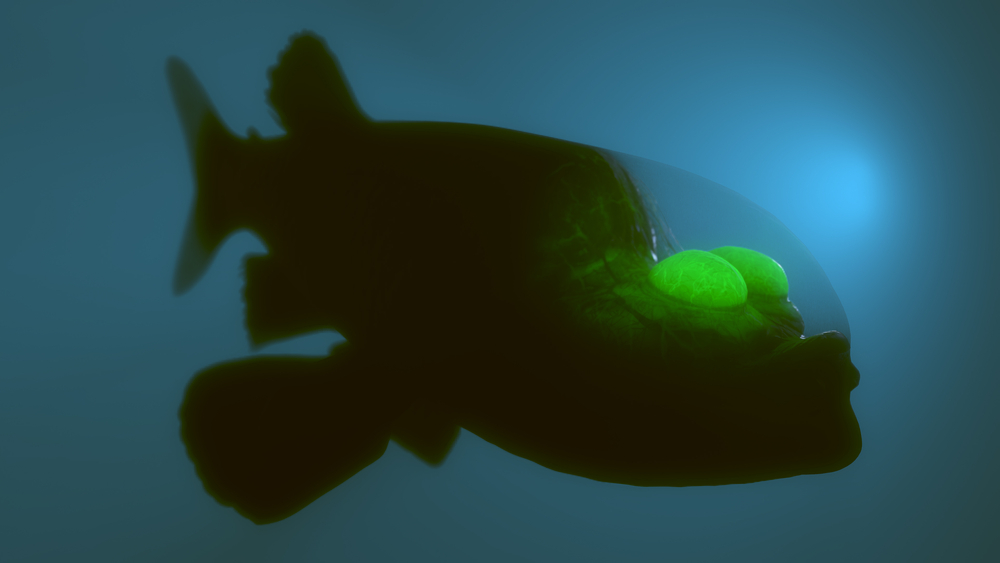
The Barreleye Fish is a deep-sea marvel known for its transparent head and tubular eyes that seem to stare upwards through its skull. This peculiar adaptation allows it to see prey and predators above, even in the darkness of the deep ocean. The fish’s eyes are shielded by a clear, dome-like structure filled with fluid, giving it a distinctly futuristic appearance. The initial discovery of this bizarre anatomy puzzled scientists, as they struggled to understand the evolutionary advantages such a feature could provide.
Recent studies suggest that these upward-facing eyes are adept at capturing the faint bioluminescent glows of other creatures in the depths. This unique visual system allows the Barreleye Fish to maintain a stealthy profile, avoiding predators while effectively hunting its own prey. Despite advances in research, much about its behavior, diet, and ecology remains a mystery. Each new sighting or study brings more pieces of the puzzle, but the full picture of the Barreleye Fish’s life is still largely incomplete.
7. The Mysterious “Faceless Cusk”

The Faceless Cusk is a bizarre deep-sea fish that lives up to its name, appearing to lack a traditional face. With eyes positioned beneath its skin and a mouth that seemingly blends into its body, this creature has confounded scientists since its discovery. Found primarily in the depths off the coast of Australia, the Faceless Cusk challenges common perceptions of fish anatomy. Its unique physical traits have prompted many questions about its evolutionary history and ecological niche.
The discovery of this fish has reignited interest in the unexplored marine environments where such unique creatures are found. Despite its ghostly appearance, the Faceless Cusk is believed to be well-adapted to the high-pressure, low-light conditions of the deep sea. Researchers continue to study its physiology to understand how it thrives in such extreme conditions. Each encounter with the Faceless Cusk deepens the enigma of deep-sea biodiversity.
8. The Legendary “Goblin Shark”
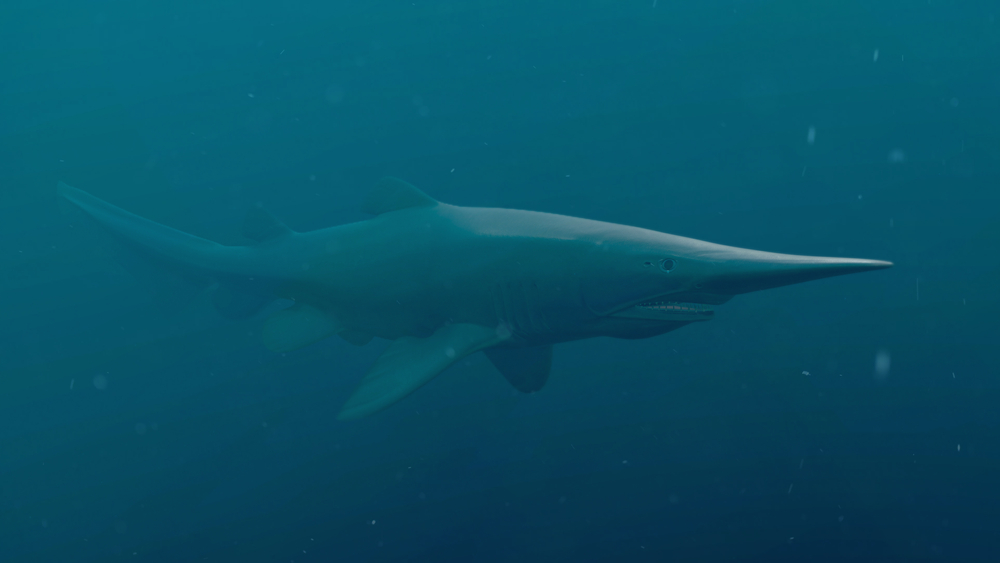
The Goblin Shark, often referred to as a “living fossil,” is a rare and ancient species with roots tracing back over 125 million years. Its most distinctive feature is its elongated, flattened snout, which houses specialized sensory organs for detecting prey in the deep ocean. The shark’s protrusible jaws, which can extend dramatically to snatch prey, have intrigued and horrified scientists since its discovery. This unique adaptation allows it to capture fast-moving prey in the dark depths where it resides.
Despite its frightening appearance, the Goblin Shark is believed to be sluggish and not a threat to humans. However, its elusive nature means that much of its behavior and biology remain shrouded in mystery. Researchers have only a limited number of specimens to study, making each encounter a valuable opportunity for scientific discovery. As with many deep-sea creatures, the Goblin Shark challenges our understanding of marine life and evolution.
9. The Intriguing “Yeti Crab”
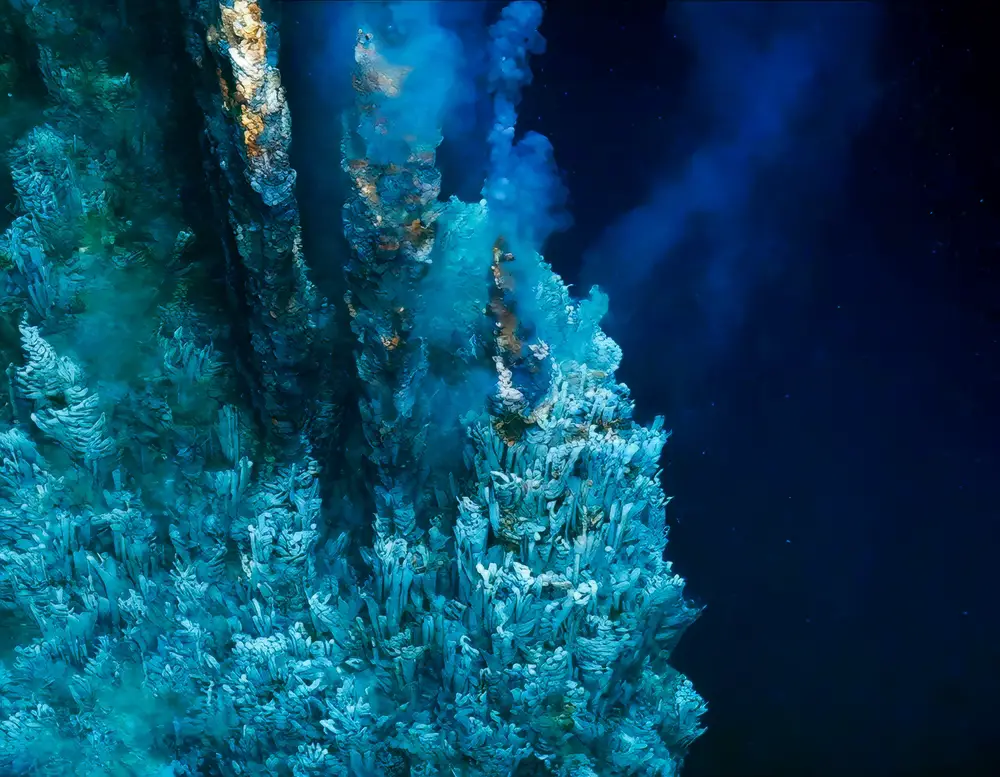
The Yeti Crab is a peculiar crustacean that was first discovered in the hydrothermal vent regions of the South Pacific Ocean. Its name comes from its hairy claws, which are reminiscent of the mythical Yeti. These claws are not just for show; they harbor bacteria that the crab cultivates and consumes as a food source. This symbiotic relationship provides insights into how creatures can survive in the extreme conditions of hydrothermal vents, where sunlight never penetrates.
The discovery of the Yeti Crab has opened new avenues of research into the unique ecosystems surrounding hydrothermal vents. These crabs have adapted to thrive in environments that are inhospitable to most forms of life, showcasing the incredible resilience and diversity of deep-sea organisms. Despite ongoing research, many aspects of the Yeti Crab’s life, such as its reproductive habits and lifespan, remain unknown. Each new finding about this creature adds to the growing understanding of life in one of Earth’s most extreme habitats.
10. The Unseen “Glass Octopus”
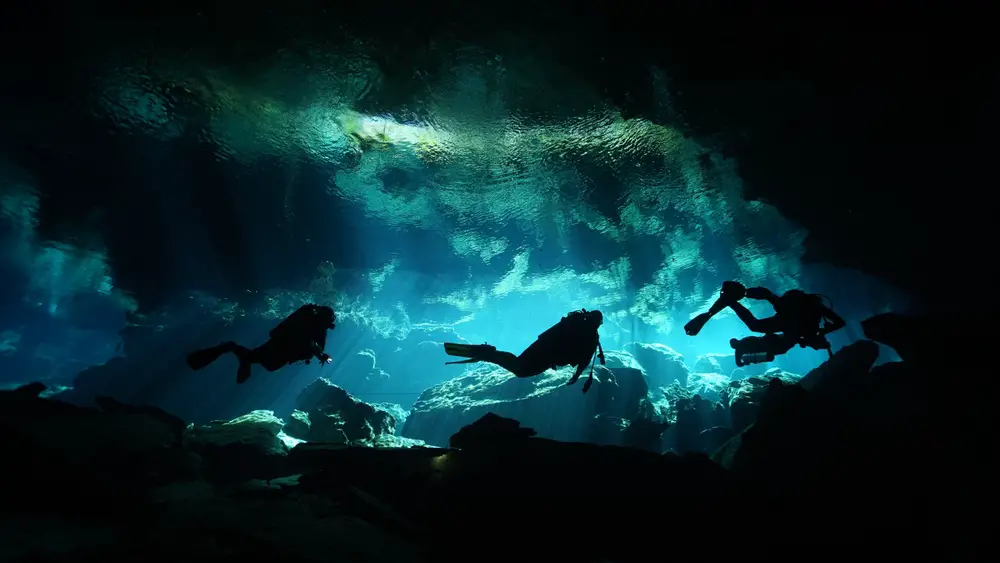
The Glass Octopus is a mesmerizing creature that, as its name suggests, is almost entirely transparent. This remarkable transparency allows it to blend seamlessly into its surroundings, making it nearly invisible to predators. It was first encountered by researchers using advanced underwater exploration technology, and its discovery was met with awe and excitement. The Glass Octopus’s delicate, almost ethereal appearance adds to its allure and the sense of wonder it evokes.
While its transparency is its most notable feature, much about the Glass Octopus remains a mystery. Its rarity and the depth at which it resides make studying it a significant challenge for marine biologists. Researchers hope that advances in deep-sea exploration will eventually provide more opportunities to observe this enigmatic cephalopod in its natural habitat. For now, the Glass Octopus remains one of the ocean’s most beautiful and unexplained wonders, a testament to the endless mysteries of the deep sea.
